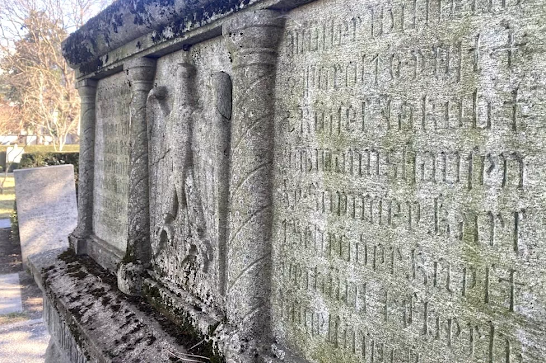For decades the huge monolithic block of granite in the middle of the cemetery in the Swiss town of Chur was ignored by passers-by; no one seemed to know quite what it was.
But the 13-tonne (13,000kg) stone monument that dwarfs the nearby gravestones is now causing controversy - and embarrassment.
Research by a local journalist has revealed links to Nazi Germany, and to neutral Switzerland's own awkward relations with its World War Two neighbours.
Chur's cemetery is in the centre of town. Many people, like radio journalist Stefanie Hablützel, pass it every day on the way to work or out shopping.
Nowadays the monument at the cemetery, untended, is covered in moss. The engravings on it are difficult to discern.
"At first sight it looks like a war memorial," says Stefanie, pointing out some faint lettering: "1914 - 1918; hier ruhen deutsche Soldaten… here lie German soldiers."
Why, though, would German soldiers be buried here?
In fact, thousands of wounded prisoners of war, French and British as well as German, were treated and interned in Switzerland during World War One. Some died from their injuries, others during the 1918 flu pandemic.
But Chur's monument was not built until 1938. "That's 20 years after these men died," says Stefanie. "It wasn't built to mourn these dead soldiers, it was built for propaganda reasons, for the Nazi regime."
Swiss historian, Martin Bucher, explains that, as the Nazis grew in power in Germany, their propaganda involved cult-like worship of their war dead. In the 1930s the German War Graves Commission became part of Hitler's propaganda machine. Its task, to create visible signs of Nazi power in Germany's neighbours as well as at home. (more...)
Nazi monument at Swiss cemetery sparks controversy

No comments:
Post a Comment